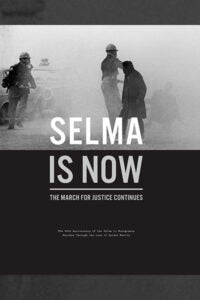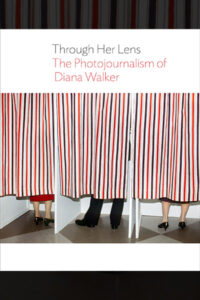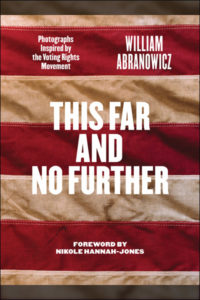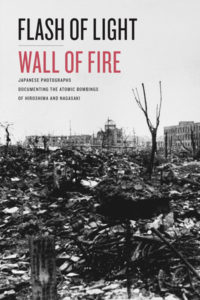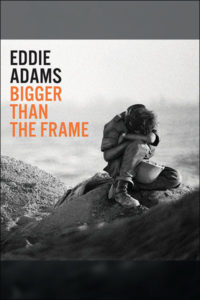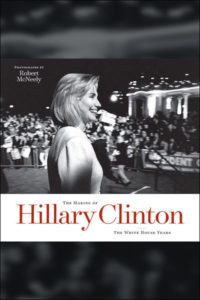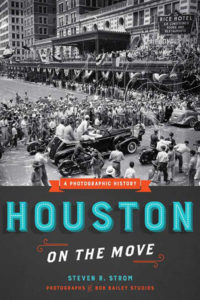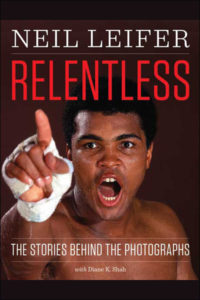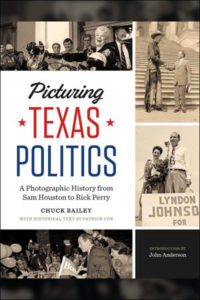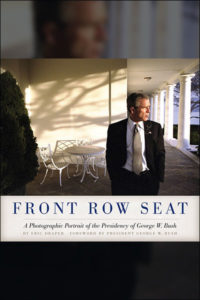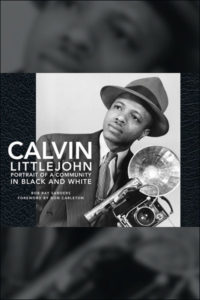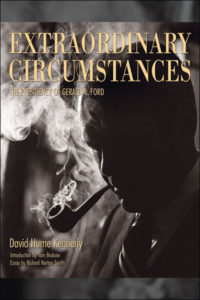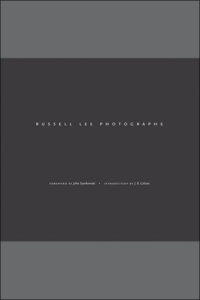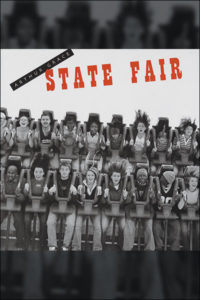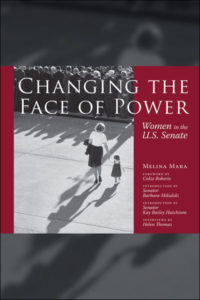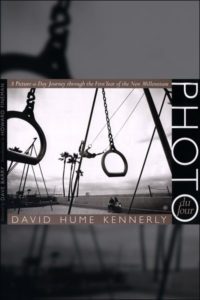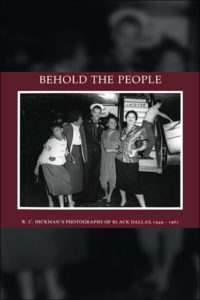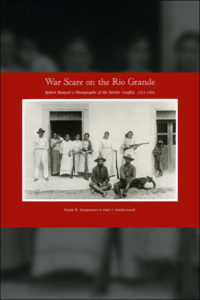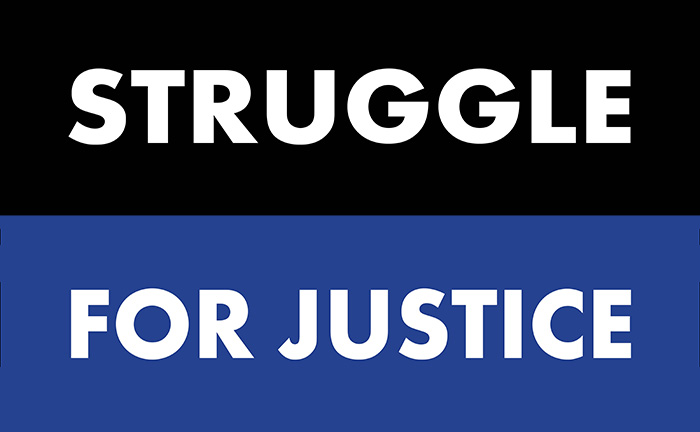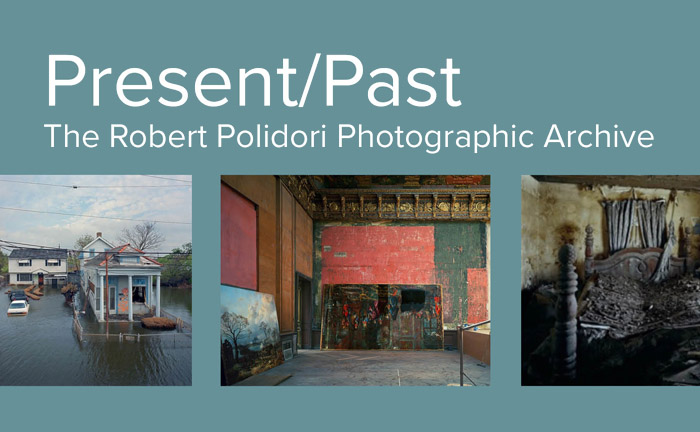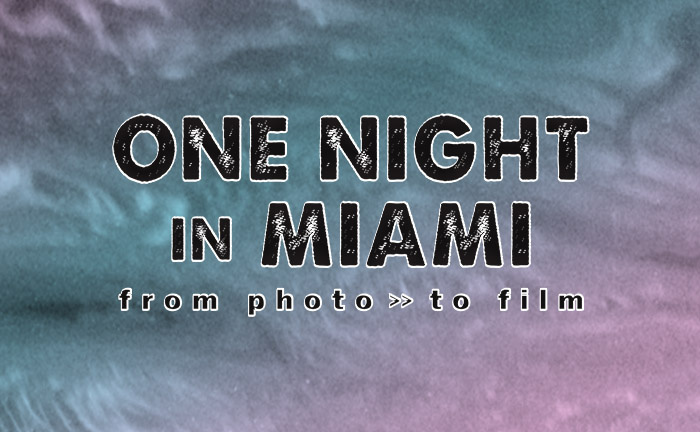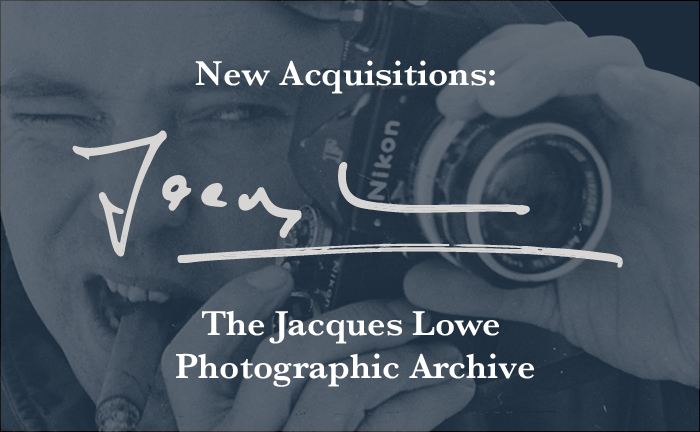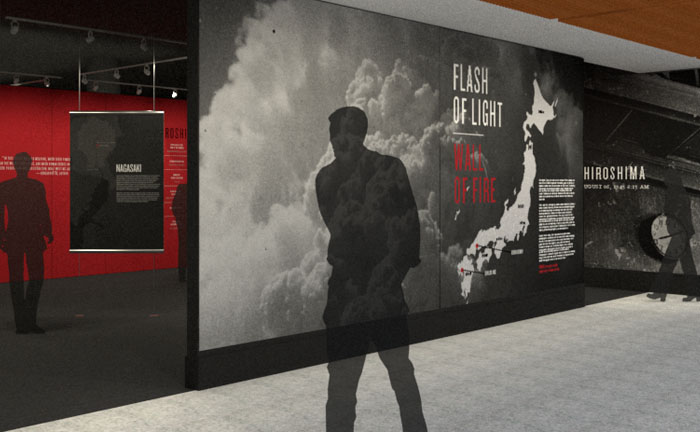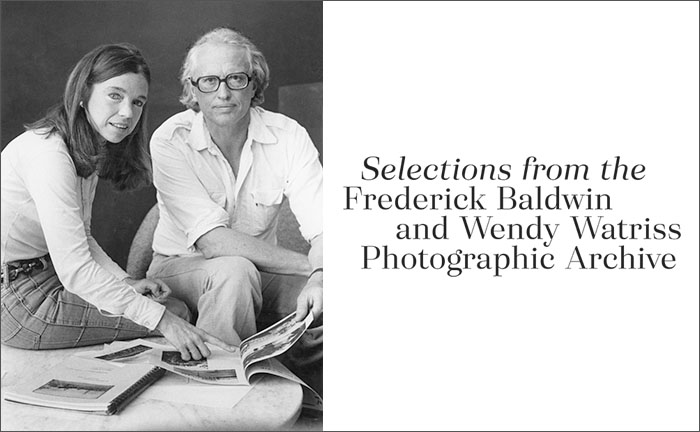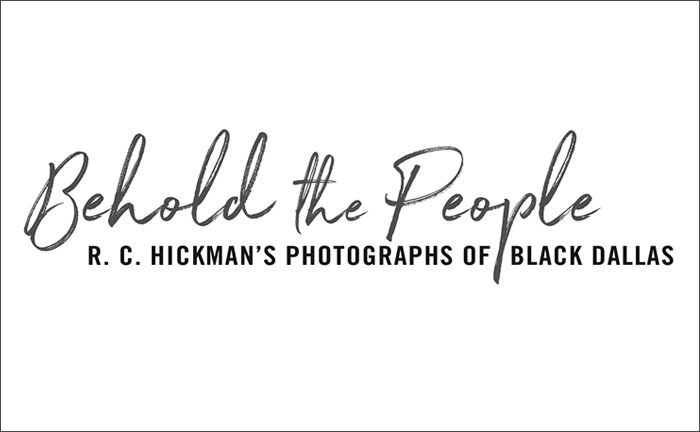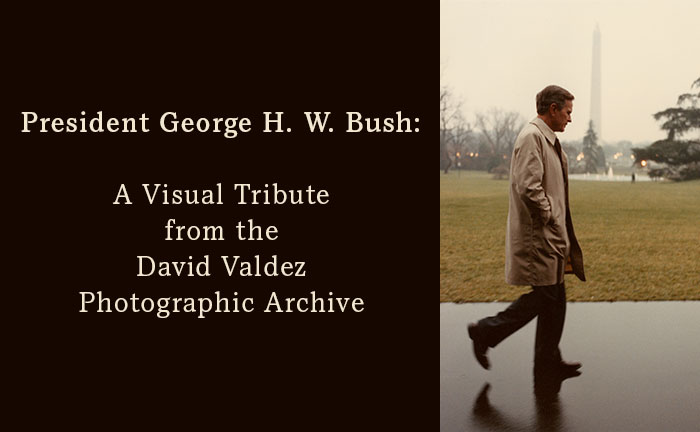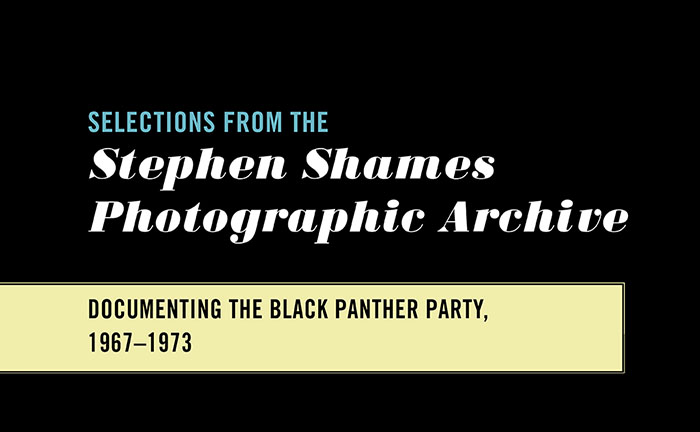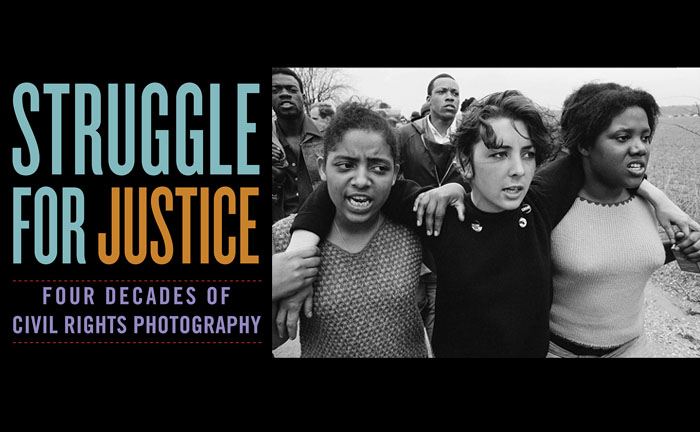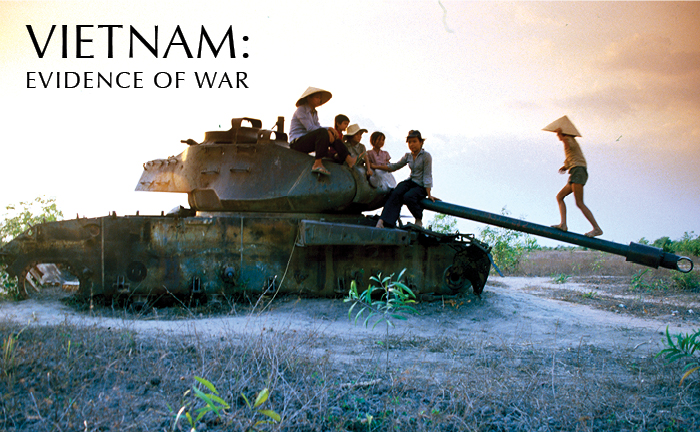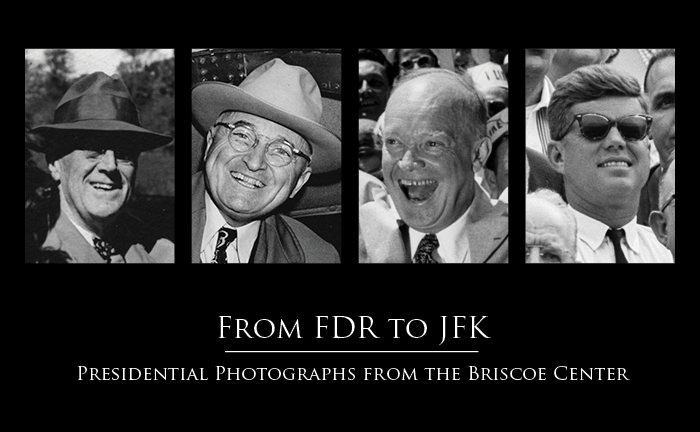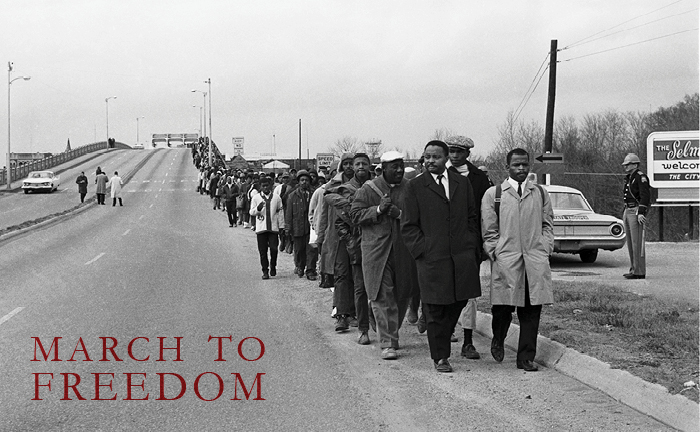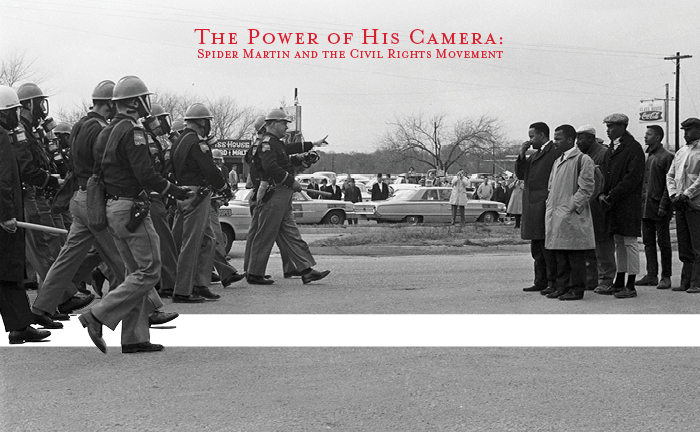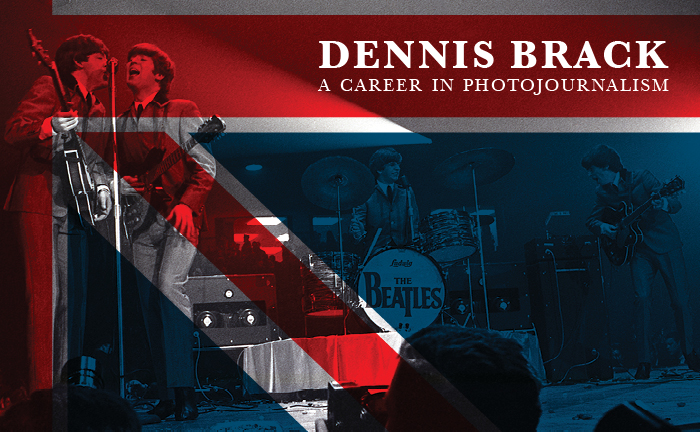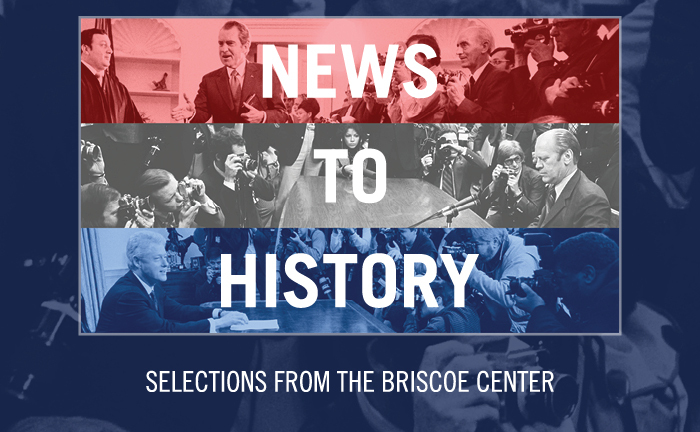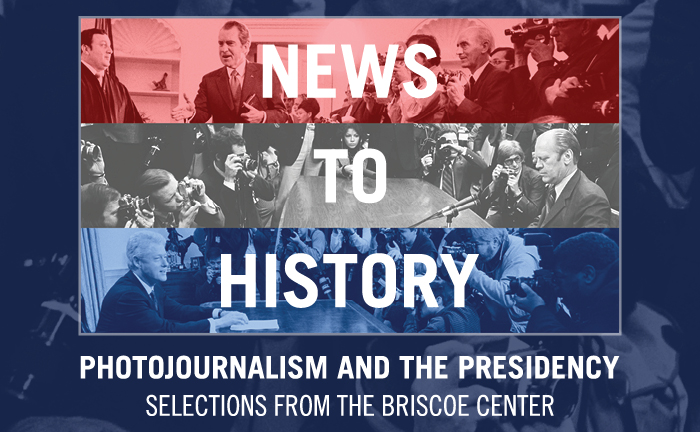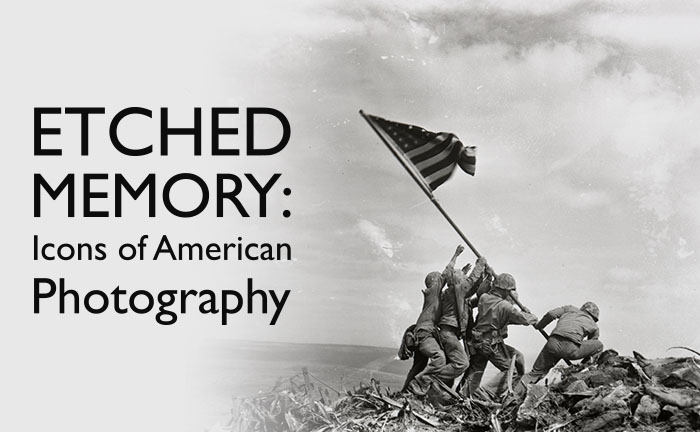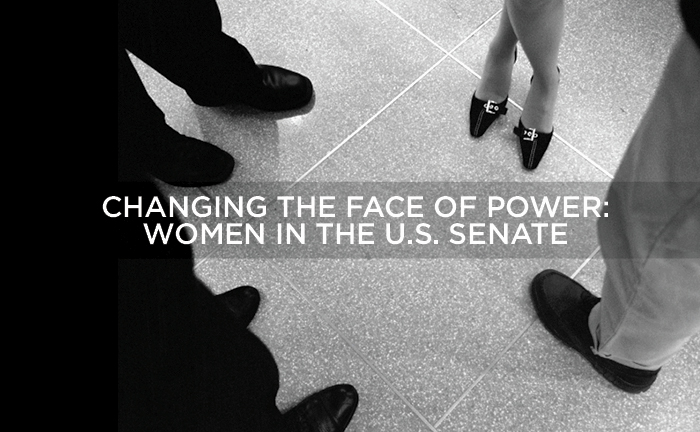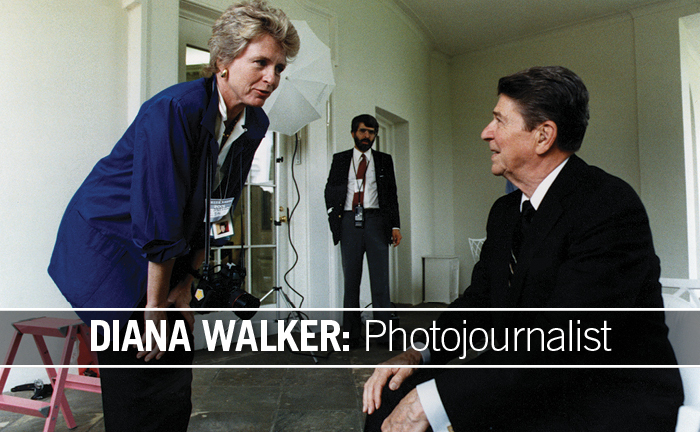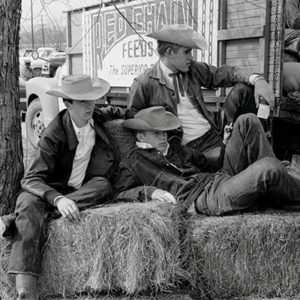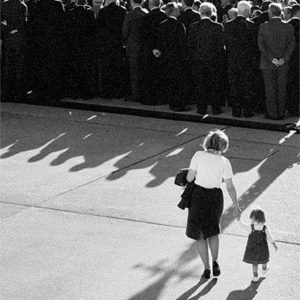Early in its history, the Center began assembling a general photographic collection to visually document the people, places, and events of Texas. In recent years, the scope of the archive has expanded far beyond the geographical and thematic boundaries of the state to include images of national and international significance by some of the nation’s leading photojournalists. The collection now contains more than 8 million images and spans the period from the late 1840s to the present. The current archive is defined by its five key collecting areas: early Texas history, the history of the University of Texas, photojournalism, documentary, and photographs within larger manuscript archives.
The general photograph collections at the Briscoe Center document the state of Texas and include approximately 750,000 photographs covering a variety of diverse subjects critical to the state’s history, including the cowboy, oil, Mexican Americans in Texas, recreation, agriculture, community life, architecture, entertainment, business, politics, and education. A centerpiece of the Center’s collection is the 1849 Alamo daguerreotype donated by Governor Dolph and Mrs. Janey Briscoe. Photographers represented in the Center’s collections include Robert Runyon, Bob and Marvin Bailey, R.C. Hickman, Calvin Littlejohn, Jimmie Dodd, Harry Annas, and Russell Lee, all of whom took images of Texas.
With over 75 photojournalism archives (and counting), the Center’s photojournalism archives have flourished over the past two decades into a renowned photographic archive of national-level importance. Subjects cover national and international political life, the civil rights movement, sports and entertainment, and countless other topics. See the Center’s photojournalism page for more information about these collections.
The Dolph Briscoe Center for American History began collecting photographs in 1945, when the institution—then known as the Barker Texas History Center—gathered materials from various university libraries and other sources and organized them into the Texas Photographs Collection, a university-related photographs collection, and general photographic subject files. Early components of the collections included glass and film negatives dating back to 1898, most of which came from university publications such as the Cactus yearbook and the student newspaper, the Daily Texan. In 1981 the center’s collections were merged, along with photographs that had been separated from individual manuscript collections, into one general photographic archive, a decision that led to an active program of collecting photographic images for use as historical evidence. Over the past two decades, the scope of the collections has expanded far beyond the geographic boundaries of the state to include images of national and international significance by some of the nation’s leading photojournalists; these collections are discussed in detail on our photojournalism pages. The expanded collection now contains more than 8 million images and spans the period from the late 1840s to the present.

The general photograph collections include some 750,000 images of the people, places, and events of Texas and feature a diverse variety of subjects, including the cowboy, oil, Mexican Americans, recreation, agriculture, community life, architecture, entertainment, business, politics, and education. Governor Dolph and Mrs. Janey Briscoe generously donated to the center one of its photographic treasures. Taken by an unknown photographer in 1849, the Alamo Daguerreotype is the earliest datable photograph taken in Texas and the only extant view of the Alamo chapel prior to its reconstruction in 1850.
Commercial and Documentary Photographers
Many of the center’s photographic resources represent the work of prominent Texas commercial and documentary photographers, including Robert Runyon (Brownsville), Bob and Marvin Bailey (Houston), R. C. Hickman (Dallas), Calvin Littlejohn (Fort Worth), Jimmie Dodd (Kingsville), Harry Annas (Lockhart), and Russell Lee (Austin).
Robert Runyon Photograph Collection

The Robert Runyon Photograph Collection of more than eleven thousand images is a unique visual resource documenting the Lower Rio Grande area during the early 1900s. Donated to the center by the Runyon family in 1986, it includes glass and nitrate negatives, lantern slides, prints, and postcards representing the entire oeuvre of commercial photographer Robert Runyon (1881–1968), a longtime resident of Brownsville. His photographs document the Mexican Revolution, the U.S. military presence at Fort Brown and along the border before and during World War I, and the growth and development of the Rio Grande Valley. In 1992 the center published a book on Runyon’s work by Frank Samponaro and Paul Vanderwood entitled War Scare on the Rio Grande: Robert Runyon’s Photographs of the Border Conflict, 1913–1916 (1992), and digital galleries of his photographs are available on the center’s website.
Bob Bailey Studios Photographic Archive

When a commercial studio operates for many decades in a single community, its work becomes a priceless visual record of the city’s history. Such is the case for the Bob Bailey Studios, which photographed sixty years of community history in Houston. Containing more than five hundred thousand images, the Bob Bailey Studios Photographic Archive features images of a remarkable variety of people and events, including visits by movie stars and politicians; aerial views of the burgeoning Houston skyline; aspects of the petroleum industry, such as drilling rigs, oil tankers, and filling stations; large crowds gathered for parades on Main Street; and the interiors and exteriors of downtown movie palaces and neighborhood theaters. Especially noteworthy are images depicting life in Houston during World War II and coverage of area news events, including a visit by Howard Hughes in 1939 and the Texas City disaster in 1947. In 2016 the center published Houston on the Move: A Photographic History featuring over two hundred previously unpublished images from the Bob Bailey Studios Photographic Archive.
R. C. Hickman Photographic Archive

R. C. Hickman was a commercial photographer who documented African American life in Dallas from 1949 to the onset of the civil rights movement in 1961. The R. C. Hickman Photographic Archives contain photographic negatives that were created during Hickman’s professional career with the Dallas Star Post and the Express. It also includes his freelance work for Jet magazine as well as his photographs documenting school segregation for National Association for the Advancement of Colored People (NAACP) court cases. In addition to Dallas news events, the archive features images of sports and entertainment celebrities; notable figures from the civil rights movement; and Dallas nightclubs, schools, universities, funerals, notable citizens, and social events. In 1994 the center published a book of Hickman’s work entitled Behold the People: R. C. Hickman’s Photographs of Black Dallas, 1949–1961.
Calvin Littlejohn Photographic Archive

Calvin Littlejohn was R. C. Hickman’s counterpart in Fort Worth, where he pursued his studio work in the African American community for almost six decades. The Calvin Littlejohn Photographic Archive—containing some seventy thousand negatives and fifty-five thousand prints and documents pertaining to Littlejohn’s professional work—includes studio portraits; group portraits at social gatherings, church services, school events, and birthday parties; and other images of the African American experience. After World War II, Littlejohn expanded his scope to include speaking engagements, visiting celebrities, and other freelance work for local newspapers, including the Fort Worth Star-Telegram. His work provides a comprehensive portrait of the African American community in Fort Worth and Tarrant County during segregation and beyond. In 2009 the center published a book on Littlejohn’s work entitled Calvin Littlejohn: Portrait of a Community in Black and White.
Jimmie A. Dodd Photograph Collection

Photographer Jimmie A. Dodd covered south Texas, a sparsely populated region that during his time was dominated by the King Ranch, Inc., a vast cattle-raising and oil production enterprise near the bustling port of Corpus Christi. South Texas was not isolated, however. Mechanization of agriculture; advances in transportation, urbanization, and industrialization; and World War II all contributed to changes in the land and its people. From 1937 to 1966, Dodd was there with his camera, and the eleven thousand Dodd negatives at the center document the social, cultural, political, civic, and economic life of south Texas. His photographs appeared in local newspapers in Kingsville, Alice, and Corpus Christi, and they feature images from the Texas City disaster, the opening of Houston’s Shamrock Hotel, PGA tour events, the Missouri Pacific Railroad, and the Kingsville Naval Air Station. Dodd also documented crime scenes and automobile accidents for the Kingsville Police Department; however, after 1966 he focused solely on studio photography.
Harry Forest Annas Photograph Collection

Harry Annas, the “town photographer” of Lockhart, Texas, from the 1930s to the ’70s, spoke of the variety of life he documented: “Portraits from glamour girls to family groups, meetings, parades, school pictures, everything, we took them all.” Shortly before his death in 1980, Annas donated his photographic archive of more than ninety thousand negatives and eighty thousand prints to the Caldwell County Historical Society, which in turn gave the archive to the Briscoe Center in 1985. While the majority of the photographs in the archive are studio portraits, other images include those of Lockhart street scenes, chamber of commerce events, pets, weddings and funerals, football games and marching bands, United Fund workers, building facades and interiors, business dealerships, copies of old family photographs, and many other features of small-town life. In 2005 a digitization project funded by a University of Texas System grant scanned five hundred negatives from the Annas archive, making them available through the Briscoe Center online database.
Verkin Photo Company Collection

The Verkin Photo Company was located in Galveston, Texas, but it also conducted business in the surrounding area, including Texas City and parts of east Texas. The Verkin Photo Company Collection includes a number of black-and-white prints as well as glass plate and film negatives from the years 1900 to 1945. The majority of the Verkin photographs represent daily life in Galveston throughout the first half of the twentieth century, as well as more dramatic events such as the hurricanes of 1900 and 1915.
Visual Materials
Photographs also constitute significant portions of the papers that were donated by prominent individuals, including Texas industrialist, developer, and New Deal official Jesse H. Jones; U.S. Speaker of the House Sam Rayburn; radio and television entertainer and First Amendment advocate John Henry Faulk; civil rights leaders James L. Farmer and Juanita Jewel Shanks Craft; U.S. Senator Ralph W. Yarborough and Representative Henry B. González; and television news anchor Walter Cronkite. The archives of organizations that also produced or collected visual documentation comprise another facet of the center’s photographic holdings. They include the Professional Touring Entertainment Industry Archives, and the business records of Austin music venues Armadillo World Headquarters and Soap Creek Saloon. Foremost among the organizational resources is the enormous photographic component of the ExxonMobil Historical Collection. With 1.5 million photographs, the collection visually documents more than one hundred years of corporate history and the energy industry at large.
University of Texas History
The center is the designated repository for the institutional archives of the university, and the photographic portion of the archives begins in 1898 and continues to the present, providing a unique visual record of the development of our parent institution. University-related materials include the Longhorn Band Records, The University of Texas at Austin Texas Student Publications Archives, photographs from campus publications like the Cactus yearbook and Daily Texan newspaper covering student life, buildings, campus events and traditions, sports teams, university departments and faculty and staff. Of particular note are the photographs of UT Physics Professor John Matthias Kuehne. Kuehne’s photographic work includes several autochromes that are perhaps the earliest color views of University of Texas at Austin.

The Briscoe Center began digitizing select portions of its photography archives in the late 1990s, in response to the needs of remote patrons who are unable to visit the archives in person. In 2005 the center mounted digitized images in an online database called the Digital Media Repository. Currently, the repository contains more than thirty thousand digital images by Bob Bailey, PF Bentley, R. C. Hickman, Russell Lee, Harry Annas, Robert Runyon, Wally McNamee, and many other photographers. The database continues to grow as the center undertakes new digitization initiatives. Likewise, the donation of born-digital photographs also is increasing, and many recent photographic donations include a significant digital component.
Our collections inspire our own projects, including books, exhibits, programs, films, and educational materials.
Banner image: Soldaderas, Lower Rio Grande Valley, 1913. Photo by Robert Runyon. Image detail from run_00152.


